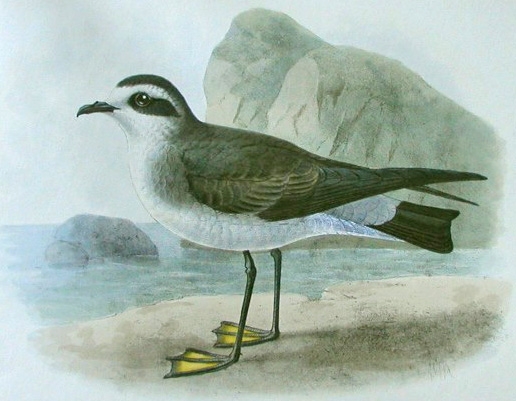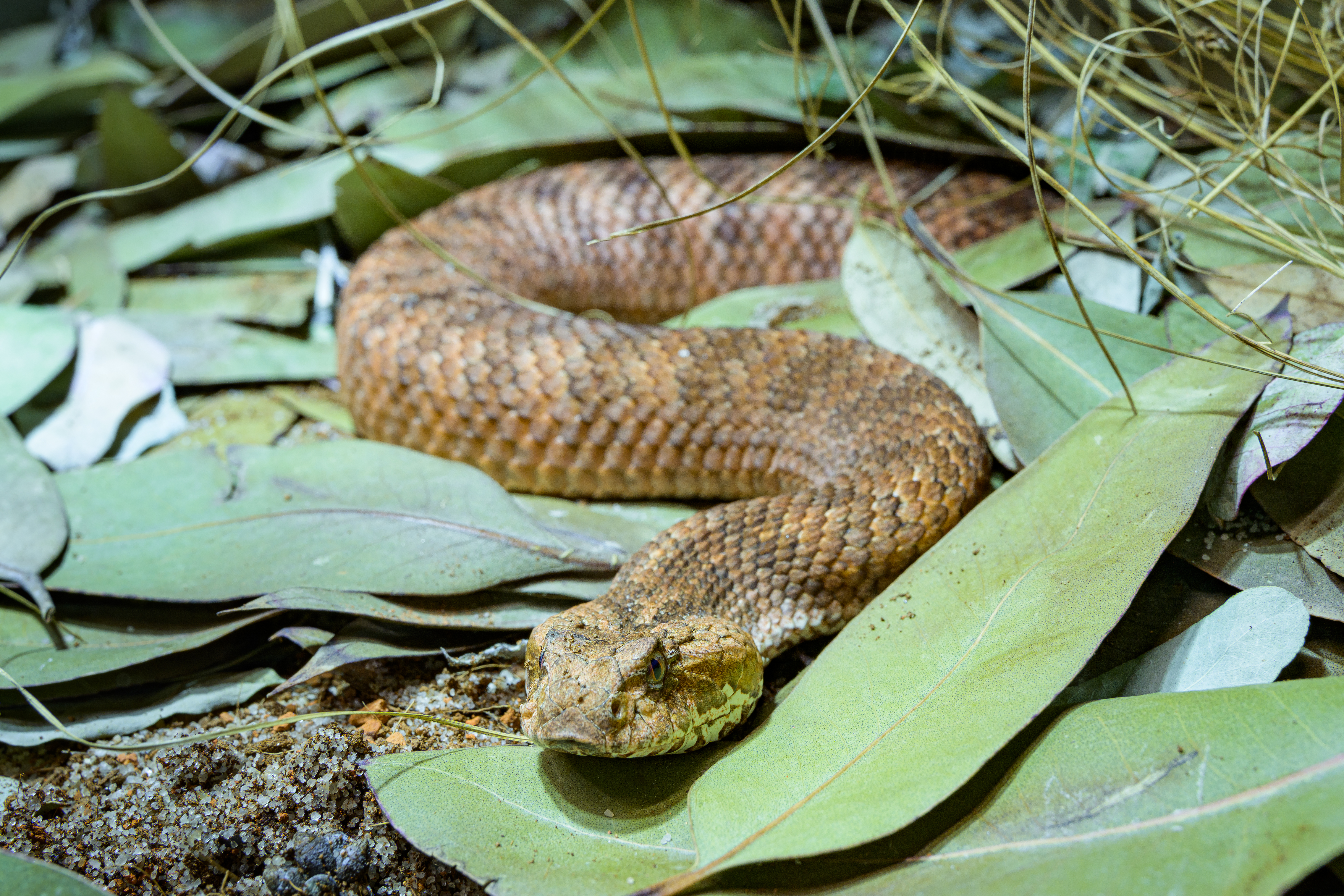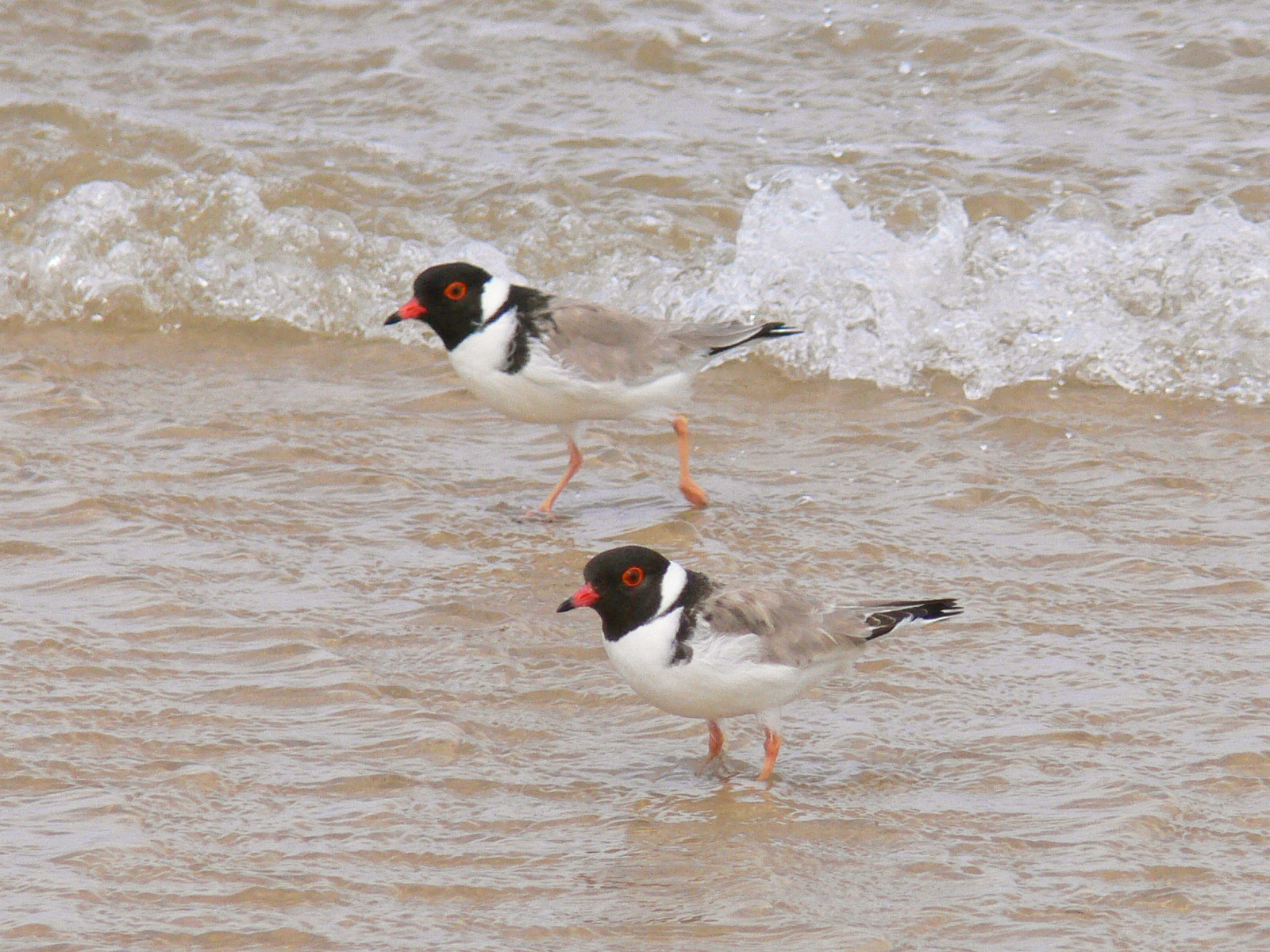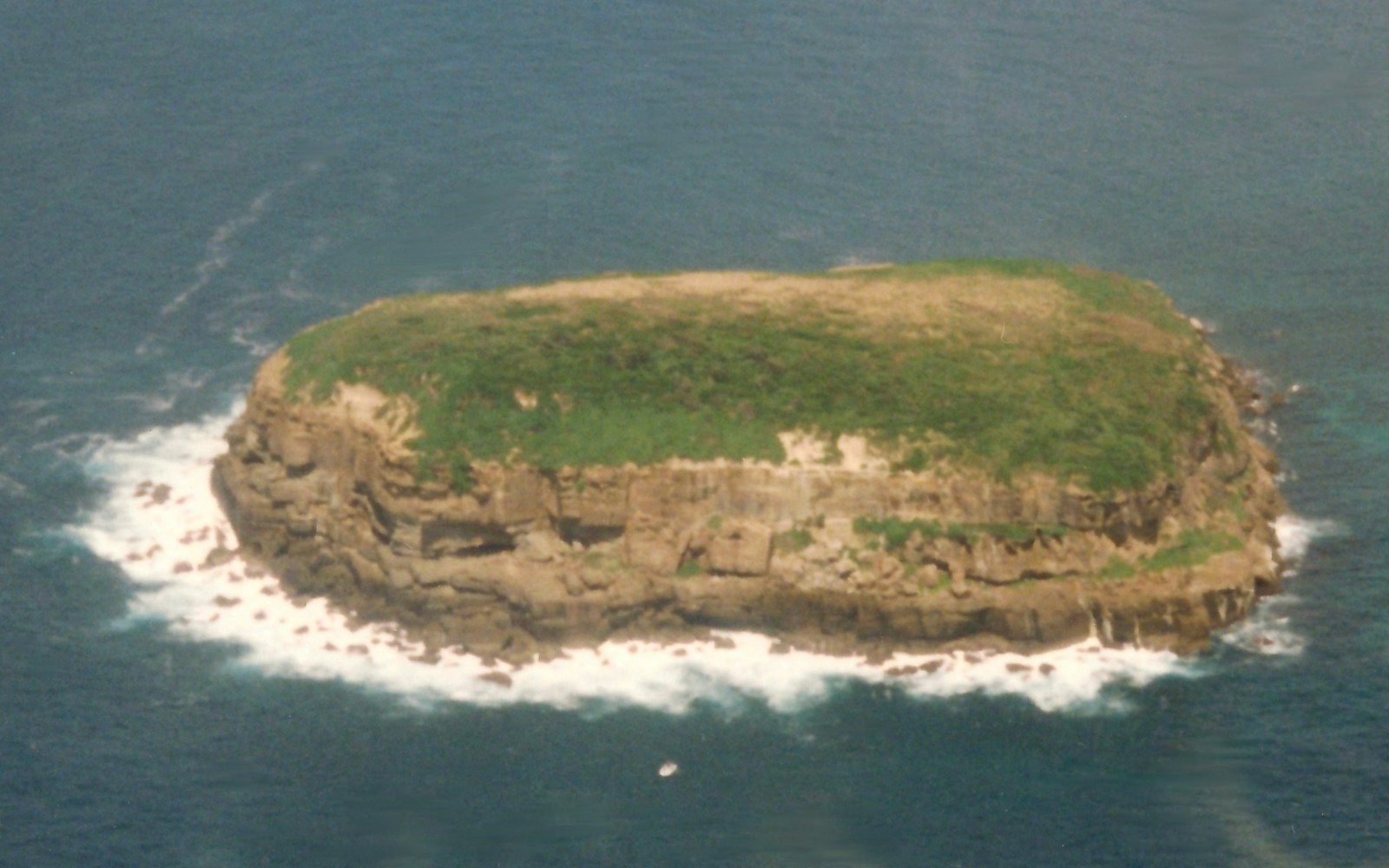|
Reevesby Island
Reevesby Island is a small, uninhabited island in the Sir Joseph Banks group of islands in southern Spencer Gulf, South Australia. Since 2018, a group of volunteers now known as the Friends of Reevesby Island have been restoring the old homestead on the island, which was inhabited until it became a conservation park in 1974. Author and local historian Eric Kotz is a member. The homestead is encircled by a low fence which was built to keep the island's resident Tiger snakes and Death adders away from the island's human inhabitants. The island is one of the largest in the Sir Joseph Banks Conservation Park and is home to many unique species including greater stick-nest rats, hooded plovers, little penguins and Cape Barren geese The Cape Barren goose (''Cereopsis novaehollandiae'') is a large goose resident in southern Australia. Etymology The species' common name is derived from Cape Barren Island, where specimens were first sighted by European explorers. It is known .... R ... [...More Info...] [...Related Items...] OR: [Wikipedia] [Google] [Baidu] |
Sir Joseph Banks Group
The Sir Joseph Banks Group is an archipelago in the Australian state of South Australia located in Spencer Gulf about off the eastern coast of the Eyre Peninsula. It consists of 21 islands of which eighteen are in the Sir Joseph Banks Group Conservation Park while the surrounding waters are in the Sir Joseph Banks Group Marine Park. It is considered to be an important seabird seabird colony, breeding site. Description The islands are low-lying, with the highest point on Spilsby of about They consist mainly of a granite base beneath limestone and are usually capped with calcrete or sandy soil. Reevesby and Spilsby are the largest islands in the group. Spilsby Island is privately owned and continues to be grazed by sheep, as well as holding a few holiday cottages. Islands The group consists of the following islands: * Blyth Island * Boucaut Island * Buffalo Reef * Dalby Island * Dangerous Reef * Duffield Island * English Island (South Australia), English Island * Hareby I ... [...More Info...] [...Related Items...] OR: [Wikipedia] [Google] [Baidu] |
Spencer Gulf
The Spencer Gulf is the westernmost and larger of two large inlets (the other being Gulf St Vincent) on the southern coast of Australia, in the state of South Australia, facing the Great Australian Bight. It spans from the Cape Catastrophe and Eyre Peninsula in the west to Cape Spencer and Yorke Peninsula in the east. The largest towns on the gulf are Port Lincoln, Whyalla, Port Pirie, and Port Augusta. Smaller towns on the gulf include Tumby Bay, Port Neill, Arno Bay, Cowell, Port Germein, Port Broughton, Wallaroo, Port Hughes, Port Victoria, Port Rickaby, Point Turton, and Corny Point. History The first recorded exploration of the gulf was that of Matthew Flinders in February 1802. Flinders navigated inland from the present location of Port Augusta to within of the termination of the water body. The gulf was named ''Spencer's Gulph'' by Flinders on 20 March 1802, after George John Spencer, the 2nd Earl Spencer. The Baudin expedition visited the gulf after Flind ... [...More Info...] [...Related Items...] OR: [Wikipedia] [Google] [Baidu] |
South Australia
South Australia (commonly abbreviated as SA) is a state in the southern central part of Australia. It covers some of the most arid parts of the country. With a total land area of , it is the fourth-largest of Australia's states and territories by area, and second smallest state by population. It has a total of 1.8 million people. Its population is the second most highly centralised in Australia, after Western Australia, with more than 77 percent of South Australians living in the capital Adelaide, or its environs. Other population centres in the state are relatively small; Mount Gambier, the second-largest centre, has a population of 33,233. South Australia shares borders with all of the other mainland states, as well as the Northern Territory; it is bordered to the west by Western Australia, to the north by the Northern Territory, to the north-east by Queensland, to the east by New South Wales, to the south-east by Victoria, and to the south by the Great Australian Bight.M ... [...More Info...] [...Related Items...] OR: [Wikipedia] [Google] [Baidu] |
Eric Kotz
Eric Kotz is a South Australian fisherman, scuba diver, mariner and social historian. He is the self-published author of three books: ''The Jawesome Coast'' (2016) and ''The Butcher's Son from Tumby Bay'' (2015) and ''Sir Joseph Banks Group'' (2018). His most recent work is dedicated to the eponymous group of islands in Spencer Gulf, South Australia. He lives in Tumby Bay, South Australia and his publications focus on life in the Eyre Peninsula and Spencer Gulf The Spencer Gulf is the westernmost and larger of two large inlets (the other being Gulf St Vincent) on the southern coast of Australia, in the state of South Australia, facing the Great Australian Bight. It spans from the Cape Catastrophe and ... regions. Eric Kotz is a shell collector and a member of Bite Club, a support group for survivors of shark attacks and the friends and relatives of victims. In 2017, Kotz claimed that 3 or 4 sharks had been shot in South Australia as a form of vigilante shark control. Refe ... [...More Info...] [...Related Items...] OR: [Wikipedia] [Google] [Baidu] |
Acanthophis
''Acanthophis'' is a genus of elapid snakes. Commonly called ''death adders'', they are native to Australia, New Guinea and nearby islands, and are among the most venomous snakes in the world. Despite their common name, they are not adders at all and belong to the Elapidae family (like cobras). The name of the genus derives from the Ancient Greek / ('spine') and / ('snake'), referring to the spine on the death adder's tail. Eight species are listed by ITIS, though it remains unclear how many species this genus includes, with figures ranging from 4 to 15 species being quoted. Taxonomy French naturalist François Marie Daudin established the genus ''Acanthophis'' in 1803, with the common death adder (''A. cerastinus'') as its only species. Although the death adders resemble vipers of the family Viperidae, they are actually members of the family Elapidae, which includes cobras, mambas, and coral snakes. It remains unclear how many species are included in this genus. Tradi ... [...More Info...] [...Related Items...] OR: [Wikipedia] [Google] [Baidu] |
Greater Stick-nest Rat
The greater stick-nest rat, also known as the house-building rat and wopilkara (''Leporillus conditor'') is a species of rodent in the family Muridae. They are about the size of a small rabbit and construct large nests of interwoven sticks. Once widespread across southern Australia, the population was reduced after European colonisation to a remnant outpost on South Australia's Franklin Islands. The species has since been reintroduced to a series of protected and monitored areas, with varying levels of success. Taxonomy A description of the species was given in a report of the explorer Charles Sturt, and published in 1848. The species was placed as genus '' Mus'', and later assigned to '' Leporillus'', and so allied to the murid family of rodents. The type was collected in vegetation on the Darling River, around 45 miles from Laidley Ponds, the disposition of this specimen is unknown. Description The species has a broad and short head, with wide and rounded ears. The length o ... [...More Info...] [...Related Items...] OR: [Wikipedia] [Google] [Baidu] |
Hooded Plover
The hooded dotterel or hooded plover (''Thinornis cucullatus'') is a species of bird in the family Charadriidae. It is endemic to southern Australia, where it inhabits ocean beaches and subcoastal lagoons. There are two recognised subspecies which form isolated eastern and western populations. The eastern subspecies is of greater conservation concern, with listings varying from Vulnerable in South Australia and Victoria to Critically Endangered in New South Wales. Taxonomy The hooded dotterel was placed in genus ''Charadrius'' but in the early 2000s it was reclassified into the genus ''Thinornis'', along with shore plover (''Thinornis novaeseelandiae''). In 2000 the number of mature individuals was estimated at 7,000. Alternative common names include: hooded plover, hoody, ''pluvier à camail'' (in French), ''kappenregenpfeifer'' (in German), and ''chorlito encapuchado'' (in Spanish). Subspecies Two subspecies of the hooded dotterel are now recognised. * ''T. c. cucullatus'' (V ... [...More Info...] [...Related Items...] OR: [Wikipedia] [Google] [Baidu] |
Little Penguin
The little penguin (''Eudyptula minor'') is a species of penguin from New Zealand. They are commonly known as little blue penguins or blue penguins owing to their slate-blue plumage and are also known by their Māori name . The Australian little penguin (''Eudyptula novaehollandiae'') from Australia and the Otago region of New Zealand is considered a separate species by a 2016 study and a 2019 study. Taxonomy The little penguin was first described by German naturalist Johann Reinhold Forster in 1781. Several subspecies are known, but a precise classification of these is still a matter of dispute. The holotypes of the subspecies ''E. m. variabilis'' and ''Eudyptula minor chathamensis'' are in the collection of the Museum of New Zealand Te Papa Tongarewa. The white-flippered penguin (''E. m. albosignata'' or ''E. m. minor morpha albosignata'') is currently considered by most taxonomists to be a colour morph or subspecies of ''Eudyptula minor.'' In 2008, Shirihai treated th ... [...More Info...] [...Related Items...] OR: [Wikipedia] [Google] [Baidu] |
Cape Barren Goose
The Cape Barren goose (''Cereopsis novaehollandiae'') is a large goose resident in southern Australia. Etymology The species' common name is derived from Cape Barren Island, where specimens were first sighted by European explorers. It is known in the local Jardwadjali language as ''toolka''. Taxonomy The Cape Barren goose was first described by English ornithologist John Latham in 1801 under the current binomial name. It is a most peculiar goose of uncertain affiliations (Sraml ''et al.'' 1996). It may either belong in the "true geese" and swan subfamily Anserinae or in the shelduck subfamily Tadorninae as distinct tribe Cereopsini, or be separated, possibly including the prehistorically extinct flightless New Zealand geese of the genus ''Cnemiornis'', in a distinct subfamily Cereopsinae. The first bones of the New Zealand birds to be discovered were similar enough to those of the Cape Barren goose to erroneously refer to them as "New Zealand Cape Barren goose" (''"Cereopsis" n ... [...More Info...] [...Related Items...] OR: [Wikipedia] [Google] [Baidu] |
National Parks And Wildlife Service South Australia
The National Parks and Wildlife Service South Australia (NPWSSA), formerly a government agency known as National Parks and Wildlife Service (NPWS) and later a service under variously named government departments and branded National Parks and Wildlife and National Parks South Australia, is a South Australian Government service within Department for Environment and Water, responsible for national parks in the state of South Australia. The National Parks and Wildlife Service was an agency founded in 1972 under the ''National Parks and Wildlife Act 1972'' to manage protected areas previously under the control of a range of agencies within government. The NPWS is reported as being a division of the following government departments until September 1993: the Department for the Environment until 11 May 1981, the Department of Environment and Planning until 1992 and the Department of Environment and Land Management. The NPWS was reportedly disbanded when the Department of Environment ... [...More Info...] [...Related Items...] OR: [Wikipedia] [Google] [Baidu] |
Islands Of South Australia
This is a list of selected Australian islands grouped by State or Territory. Australia has 8,222 islands within its maritime borders. Largest islands The islands larger than are: * Tasmania (Tas) ; * Melville Island, Northern Territory (NT), ; * Kangaroo Island, South Australia (SA), ; * Groote Eylandt (NT), ; * Bathurst Island (NT), ; * Fraser Island, Queensland (Qld), ; * Flinders Island (Tas), ; * King Island (Tas), ; and * Mornington Island (Qld), . New South Wales * Amherst Island, in Lake Mummuga * Bare Island, near the north headland of Botany Bay * Belowla Island, off Kioloa Beach * Bird Island, located near Budgewoi, east of the Central Coast * Boondelbah Island, at the mouth of Port Stephens * Brisbane Water: ** Pelican Island ** Riley's Island ** St Hubert's Island (largely artificial, created by raising an inter-tidal wetland above high water level) * Broughton Island, located north of Port Stephens * Broulee Island, located off the coast at Broulee ... [...More Info...] [...Related Items...] OR: [Wikipedia] [Google] [Baidu] |







